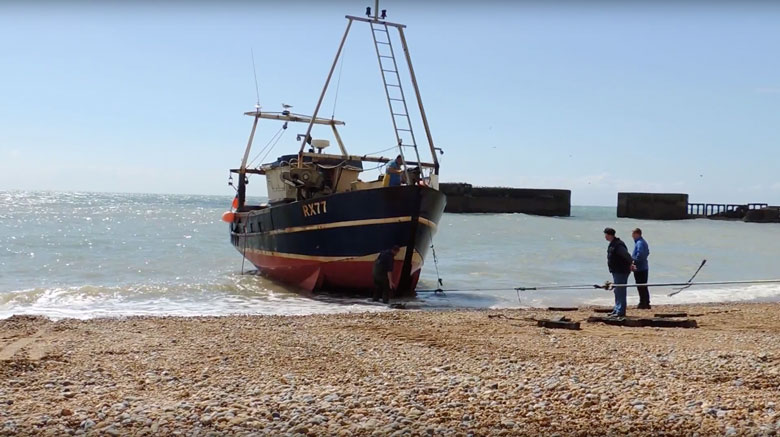Rescued
A recently recovered Van Gogh painting is a dramatic depiction of a coastal scene that’s still familiar to beach-launched fishing communities today.

Two Van Gogh paintings stolen in Amsterdam in 2002 have been found by police in Naples during a crackdown on organized crime. It’s a great story that’s well worth a read, but the reason that we’re writing about here is that one of the lost paintings is a fascinating coastal scene: Seascape at Scheveningen (1882). It’s one of only two seascapes that Van Gogh painted during his years in the Netherlands and is “a striking example of [his] early style of painting, already showing his highly individual character,” says the Van Gogh Museum, from which it was stolen.
Art historians know that Van Gogh painted the work, at least in part, on the spot, because of tiny wind-blown grains of sand embedded in the paint. There’s a nice description of the scene in The Passions of Vincent van Gogh by B. Ione Mutchler PhD:
The drama of a dark-hulled stranded boat was reflected on the wet sand at the edge of the beach where wave after wave of foam-crested tide rushed in from the sea. Onlookers standing on the beach, many of them women, were watching the efforts to pull the surf-tossed boat higher up onto the safety of the beach. Two men waited with a horse-drawn wagon just above the waterline on the dry sand. A rope had been stretched from the stranded vessel to near where the horse and wagon stood ready to pull the boat ashore.

Much the same method described here was used as a matter of course to land beach-launched fishing boats in the UK and indeed still is today: it’s a daily occurrence in Hastings, for example (pictured), home to the largest beach-launched fishing fleet in Europe, although of course now tractors or winches are used instead of horse-power in its raw form. You can see the video from which the still below was taken on YouTube. Or for a more dramatic example, go along to the Hastings Fishermen’s Museum and watch the looped video of a boat landing in the kind of stormy conditions captured by Van Gogh – it’s a real eye-opener.





